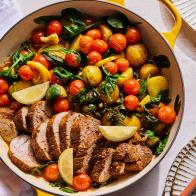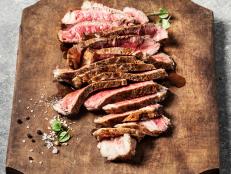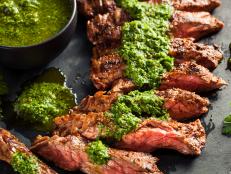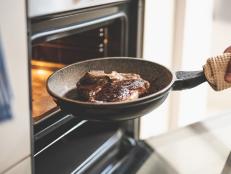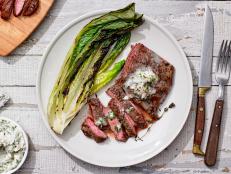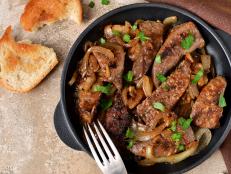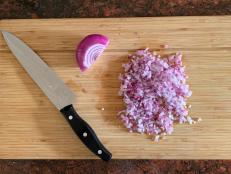Pork Butt vs. Pork Shoulder: What’s the Difference?
Don’t assume you can use them interchangeably.

kajakiki/Getty Images
By Layla Khoury-Hanold for Food Network Kitchen
Layla Khoury-Hanold is a contributor at Food Network.
Maybe you know that pork butt makes superlative pulled pork but have wondered if you could sub in pork shoulder. Or perhaps you’ve stood in the meat aisle trying to decide whether pork butt or pork shoulder is best for your recipe. These two cuts of meat look similar, but there’re several distinctions to keep in mind when making your selection. Here, we break down the difference between pork butt and pork shoulder and share our favorite recipes for these two porcine proteins.
What’s the Difference Between Pork Butt and Pork Shoulder?
Pork butt and pork shoulder are both cuts that come from the pig’s shoulder (despite the term pork butt suggesting otherwise). Both are relatively inexpensive cuts that lend themselves to low-and-slow cooking applications such as barbecuing, braising, stewing or cooking in a slow cooker or Instant Pot. While there are instances when these two cuts can be used interchangeably, there are a few differences to keep in mind when deciding which one to use.
Pork butt is a cut of meat that comes from the thicker section of a pig’s shoulder and includes parts of the neck, shoulder blade and upper leg. It’s a semi-tough cut of pork that contains a lot of connective tissue and fat marbling throughout; it’s typically sold with the fat cap intact. This cut is also labelled as Boston butt—supposedly, in Revolutionary New England, it was stored in specialty barrels called “butts,” and the technique for cutting it originated in Boston.
Pork shoulder, which can also be labeled as picnic shoulder, comes from the thinner, triangle-shaped end of the pig’s shoulder, just above the front leg. It has less marbling and fat than pork butt. Pork shoulder is often sold with the skin on and a layer of fat.

aoldman/Getty Images
When to Use Pork Butt
Because pork butt has intense fat marbling and a concentration of connective tissue, it can endure hours of cooking. Pork butt is an ideal choice for barbecue pulled pork, but it also lends itself to braising and stewing, which tenderizes the meat and melts the fat. Use pork butt in any recipe where you’re looking for fall-apart-tender meat and a rich, porky flavor, such as pulled pork, carnitas or stew. Pork butt can also be roasted or made into ground pork or sausages.

Mint Images/Getty Images
When to Use Pork Shoulder
When you want the meat to hold its shape when sliced or chopped, opt for pork shoulder. Pork shoulder can be roasted whole and sliced, like ham, or braised and sliced or chopped before serving. It can also be cut into chunks for stew or chili recipes. Since pork shoulder is sold with the skin on, pork shoulder is also your best bet if you’re looking to obtain a crisp skin (although you can trim the skin if desired). Pork shoulder can also be used to make ground pork.
Pork Butt Recipes

Caitlin Ochs
You don’t need a smoker to achieve succulent, shreddable pulled pork. All you need is a pork butt, a simple rub and a long trip to the oven (and a little patience!). The result is rich, fall-apart tender pulled pork that’s excellent piled onto a squishy bun and paired with vinegary coleslaw. Save leftovers to add to salads, quesadillas, grain bowls or wraps.

Pork butt shines in this aromatic, spicy stew. It’s first cut in half and rubbed with spices, then cooked for 7 hours in a slow cooker until it shreds easily into bite-size pieces that are perfect for nestling into warm tortillas.

Andrew Purcell
Once you make your own carnitas, taco Tuesday will never be the same. Pork butt is simmered in a citrusy mix of thyme, garlic and bay leaves until fork-tender. After you shred the meat, it’s worth making the effort to crisp up shreds to impart extra flavor and create the Mexican dish’s signature crispy bits.

Marcus Nilsson, Marcus Nilsson
While pork butt is lauded for its starring role in pulled pork, this recipe proves that it can do the whole-roast thing, too. The citrus-based marinade helps to break down the connective tissue as the pork marinates overnight; then it roasts up beautifully burnished. Be sure to serve it with the flavorful pan juices.

RYAN DAUSCH
First, pork butt is seared on all sides, then it cooks low-and-slow for hours with a mixture of soy sauce, mirin, scallions, ginger and garlic. The tender pork slices up beautifully and complements a rich broth bolstered by the strained pork cooking liquid.
Pork Shoulder Recipes

Teri Lyn Fisher
With this make-ahead pork shoulder recipe, you get the best of both worlds and several days’ worth of dishes, too. First, you roast the pork low-and-slow till tender, then cover it and let it braise for 30 minutes. The result? A beautifully browned piece on top destined for slicing, perfect for Sunday supper or next-day sandwiches, plus a shreddable juicy bottom part that’s ideal for tacos, BBQ sandwiches and salads.

Con Poulos Prop Stylist: Marina Malchin 917 751 2855
Using pork shoulder in this hearty, chile-based stew yields succulent meat that still holds its shape when roughly chopped at the end. You could sub in pork butt here, but keep in mind that since it has more marbling, it’ll render more fat as it cooks and make for a richer end product.

Christopher Testani
Think pot roast but make it pork. In this one-pot recipe, a bone-in pork shoulder gets pierced all over, then rubbed with an herbaceous spice paste before getting the slower cooker treatment alongside chicken broth, potatoes and rutabaga. Be sure to tie the roast with kitchen twine so it keeps it shape.

Boneless pork shoulder is trimmed and then cut into cubes, simmered first with beer and then with a cooked tomato-and-poblano mixture and pumpkin puree. It all adds up to a hardy, creamy bowlful that begs to be added to your comfort food repertoire, stat.
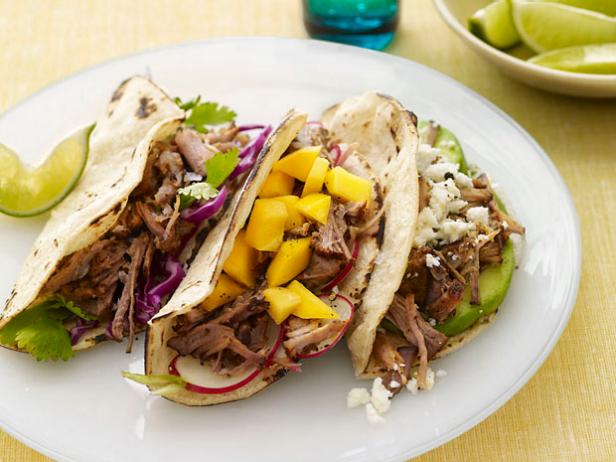
This crowd-pleasing taco filling is one you’ll want to make on repeat. It takes a little bit of time to make the bright, aromatic sauce that accompanies the pork shoulder in the slow cooker, but it’s totally worth it. The pureed mixture features Mexican chiles, garlic, honey and vinegar, imbuing the fork-tender meat with a depth of flavor.
Related Links:




